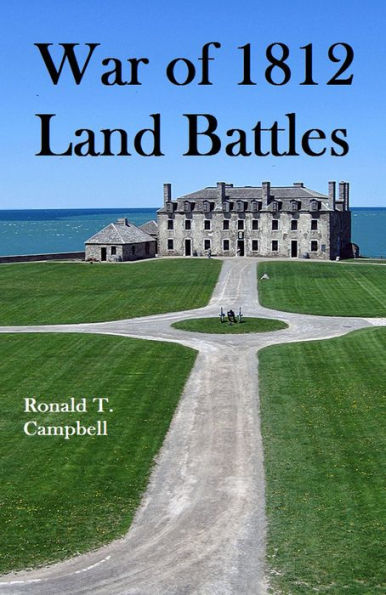Two hundred years later, the War of 1812 has been mostly forgotten. When the United States declared war on England, both sides were unprepared for battle. American troops outnumbered British forces by two-to-one; however, they were led by inexperienced politicians and aging Revolutionary War heroes. Two years later, young and bold U.S. commanders faced hardened veterans of the Napoleonic Wars in Europe.
“War of 1812 Land Battles” is a bicentennial review that summarizes the most significant battles and atrocities that occurred during the ground war:
* Canada invaded repeatedly by American armies
* Women and children butchered during the Fort Dearborn Massacre
* Three American forts captured without a fight
* Britain’s most talented general killed in the first significant battle
* Wounded prisoners slaughtered at the River Raisin Massacre
* York (Toronto) looted by American soldiers
* Fort Meigs defended by a hastily-built earthen wall
* Towns burned to the ground near Niagara River
* A young officer deemed a hero after the Battle of Fort Stephenson
* The great Shawnee Chief Tecumseh killed at the Battle of the Thames
* Soldiers clashed desperately for a hill overlooking Niagara Falls
* Washington torched by British troops
* Fort McHenry denied the Royal Navy’s attempt to capture Baltimore
* New Orleans saved by a surprise attack
* The Duke of Wellington’s brother-in-law killed by an American sharpshooter
* British veterans of the Napoleonic Wars defeated by a civilian army
As the last armed combat between the United States and England, the war is important to the history of America. Three future U. S. Presidents led men into combat; Francis Scott Key wrote a poem that became the American National Anthem while observing the British bombardment of Fort McHenry in Baltimore harbor; and for decades afterward, Americans celebrated their unlikely win at the Battle of New Orleans almost as joyously as the Fourth of July.
Two hundred years later, the War of 1812 has been mostly forgotten. When the United States declared war on England, both sides were unprepared for battle. American troops outnumbered British forces by two-to-one; however, they were led by inexperienced politicians and aging Revolutionary War heroes. Two years later, young and bold U.S. commanders faced hardened veterans of the Napoleonic Wars in Europe.
“War of 1812 Land Battles” is a bicentennial review that summarizes the most significant battles and atrocities that occurred during the ground war:
* Canada invaded repeatedly by American armies
* Women and children butchered during the Fort Dearborn Massacre
* Three American forts captured without a fight
* Britain’s most talented general killed in the first significant battle
* Wounded prisoners slaughtered at the River Raisin Massacre
* York (Toronto) looted by American soldiers
* Fort Meigs defended by a hastily-built earthen wall
* Towns burned to the ground near Niagara River
* A young officer deemed a hero after the Battle of Fort Stephenson
* The great Shawnee Chief Tecumseh killed at the Battle of the Thames
* Soldiers clashed desperately for a hill overlooking Niagara Falls
* Washington torched by British troops
* Fort McHenry denied the Royal Navy’s attempt to capture Baltimore
* New Orleans saved by a surprise attack
* The Duke of Wellington’s brother-in-law killed by an American sharpshooter
* British veterans of the Napoleonic Wars defeated by a civilian army
As the last armed combat between the United States and England, the war is important to the history of America. Three future U. S. Presidents led men into combat; Francis Scott Key wrote a poem that became the American National Anthem while observing the British bombardment of Fort McHenry in Baltimore harbor; and for decades afterward, Americans celebrated their unlikely win at the Battle of New Orleans almost as joyously as the Fourth of July.

War of 1812 Land Battles

War of 1812 Land Battles

Product Details
| BN ID: | 2940033230273 |
|---|---|
| Publisher: | Ronald T. Campbell |
| Publication date: | 05/11/2012 |
| Sold by: | Smashwords |
| Format: | eBook |
| File size: | 4 MB |
